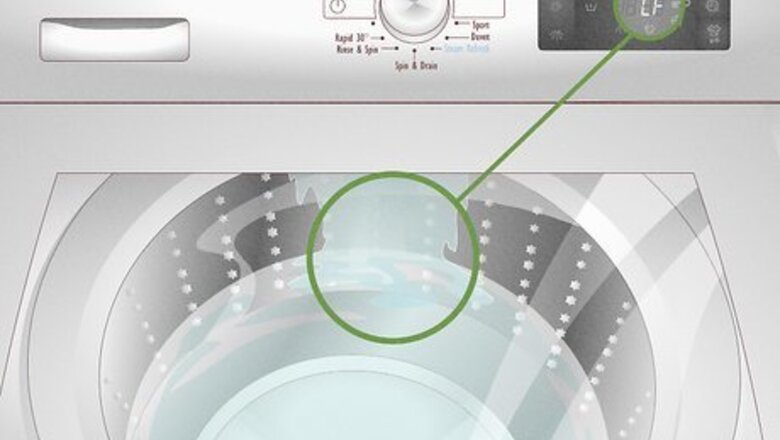
views
- The Lf, F8 E1, and Lo Fl error codes all mean that your Whirlpool washing machine is taking too long to fill with water.
- Confirm the water supply lines are unkinked, secured, and unclogged.
- If the drain hose is more than 4.5 inches (11 cm) deep in the drain line or sink, raise it to prevent water from siphoning back into the machine.
What does Lf mean?

Lf indicates that the washing machine is taking too long to fill. Lf is short for “long fill.” Basically, your machine has detected an issue with the rate of water flow into the drum. In most cases, this means it’s going to take longer for your wash cycles to complete, although it can occasionally take so long that your machine can’t reliably run correctly. On some machines, the error code will be F8 E1 or Lo Fl. These error codes are identical to Lf.
Are the supply lines tight and unkinked?
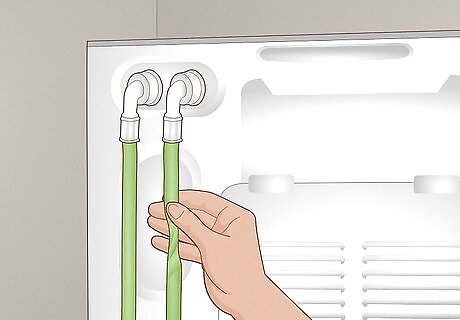
Confirm the water lines are secured and smooth. If the water lines are kinked or knotted up, adjust them by hand to ensure they’re smooth so the water can flow freely. Also, check the nut where the supply lines feed into the machine to confirm they’re tight and secure. If the nuts are loose, tighten them by hand and use a wrench to confirm they are firmly in place. Don’t use a wrench to tighten the supply line nuts super hard. If you use too much force, you may damage the nuts or break the plastic threading on the machine. If there’s water on the floor behind the machine, the supply lines are almost positively not secured correctly.
Are the supply lines working?
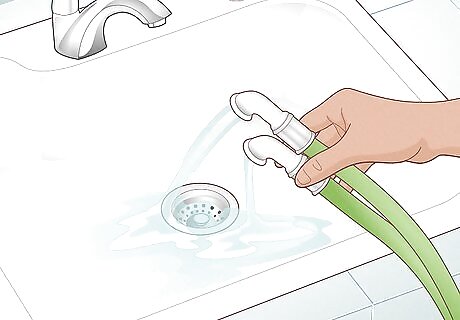
If you just installed the washer, test your supply lines. Close the water valves connected to your washer’s hot and cold supply lines by turning the valves all the way clockwise. Then, if you installed the lines already, remove them from the machine by twisting the nuts on the machine by hand. Set the end of each line in the sink (or a big tub if there’s no sink). Turn the water on all the way to confirm that the water flows freely out of each valve. If only one of the lines is slow, it’s probably clogged. Replace the clogged hose and you should be good to go. If the water doesn’t flow freely and the valves are open all the way, your water pressure is low. Your machine should still run just fine, but expect the cycles to take longer than they normally would. If you do want to fix the water pressure in your supply lines, contact a plumber. If the nuts don’t come loose on your machine, use a wrench to gently unlock them. Then, unscrew them by hand once they’re loose. Do you not have two supply lines? If so, this is 100% the issue. Whirlpool washers require both hot and cold water lines to fill efficiently.
Are the water inlet screens clogged?
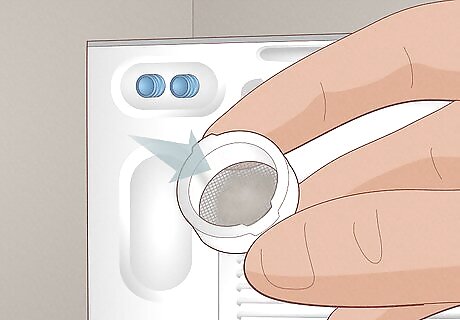
While the supply lines are unlocked, check the screens. Some Whirlpool models have filter screens at the end of the inside of each supply line called "water inlet screens." They’re designed to block debris from entering the machine from your water lines, but if they’re damaged or dirty, they can slow the water flow. Without removing them, clean the screens with a small paintbrush or cloth if they’re dirty. If your water lines don’t have screens, don’t worry about it. Most models don’t. If you can’t clean the screen with a brush, you can try prying the screens out with tweezers or a small flathead screwdriver to clean them out. Whirlpool recommends against this, though.
Is the drain hose correctly installed?
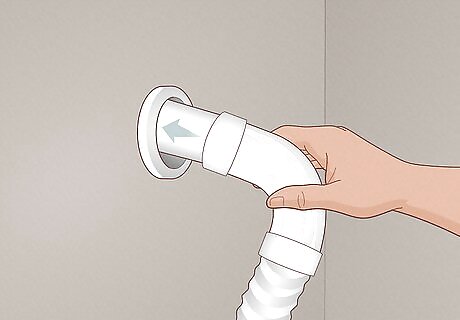
An improperly installed drain hose will trigger Lf errors. Confirm that your drain hose is inserted no more than 4.5 inches (11 cm) into the drain line or sink where it empties out. If it isn’t, adjust the line by hand and re-secure it with a zip tie. When the drain is too low, the water can siphon out of the drum as it’s filling and empty out into the sink. When this happens, the drum may never fill up with enough water since it keeps automatically emptying when the water level reaches a certain point. If you’ve just installed the washing machine and the supply lines are working correctly, an improperly installed drain hose is almost positively the culprit.












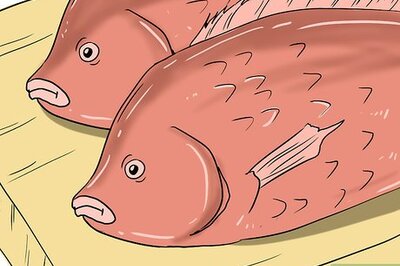





Comments
0 comment